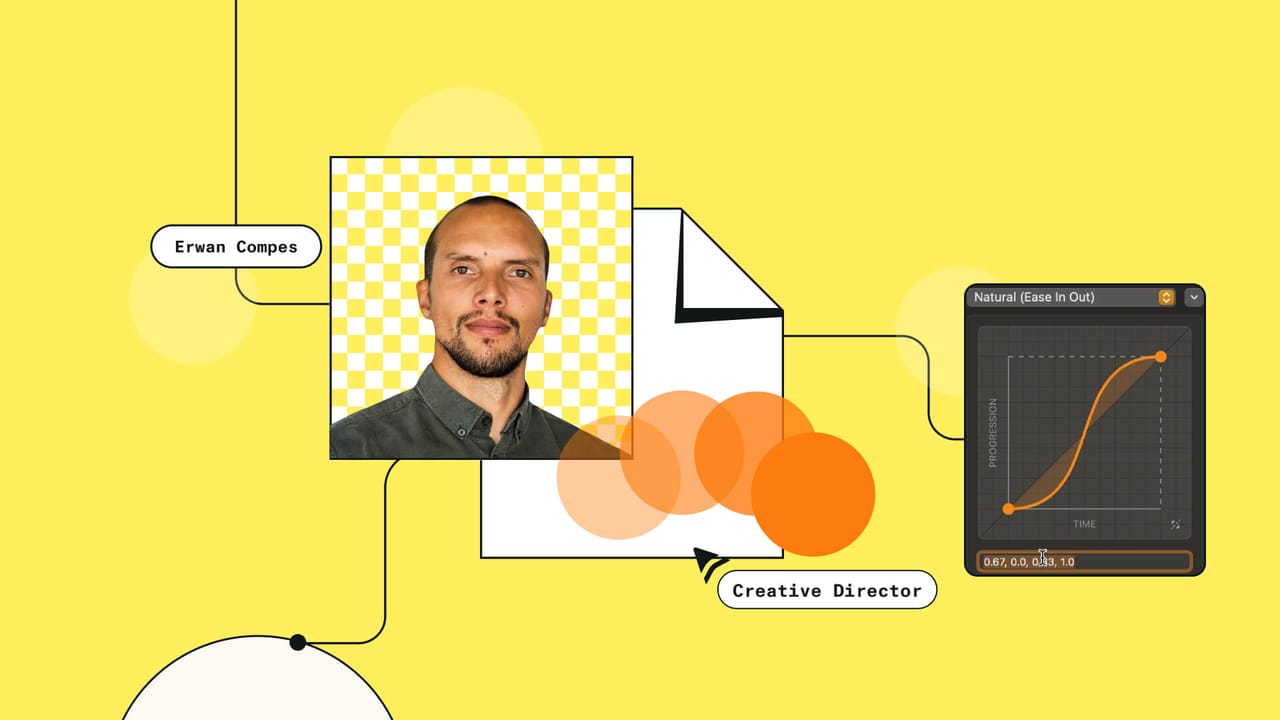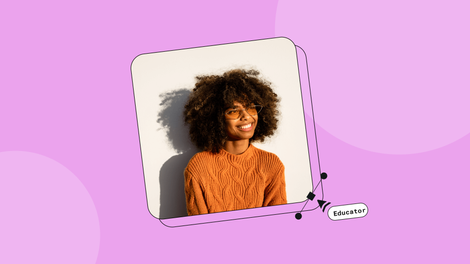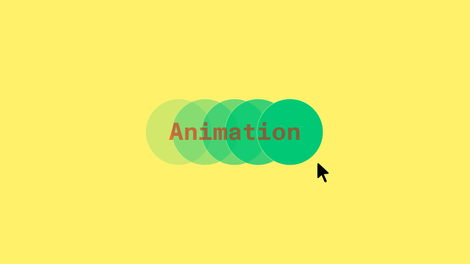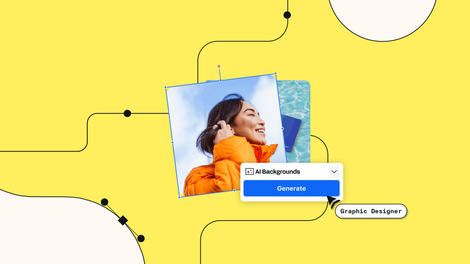We caught up with established independent designer and creative director Erwan Compes. Based in the USA but working remotely globally, Erwan is a former product designer, chief design & marketing officer, and UX/UI designer.
Erwan specializes in brand design, creative direction, user experience design, immersive brand experiences, and creating digital products and apps. “I enjoy taking ownership of the workflow and being responsible for a project's successful evolution through the different phases,” Erwan says. A typical design project includes:
- Strategy
- Research
- Concepts
- Design
- Prototyping
- Implementation
- Quality assurance

In this interview, Erwan takes us through the phases of creative direction and how he approaches team management and marketing collaboration. He also gives us insight into designing a brand from scratch and learning animation as a designer.
We’ll also look at two of his customer case studies, Pliability (formerly ROMWOD) and We Are SKY™.
Day-to-day of a creative director
Creative direction is about defining the overall aesthetic and function of design. A creative director ensures all design elements work together cohesively to deliver a compelling and immersive user experience. These elements include:
- Logo
- Typography
- Colors
- Layout
- Motion
- Interaction
“I primarily focus on brand design, web experiences, and mobile apps. My role as a creative director involves researching the brand in question, auditing their positioning, and imagining and shaping the visual and interactive elements to align strategic goals with user needs.”—Erwan Compes, Independent Designer & Creative Director
He mostly uses Figma design software because it covers most of his design needs. Figma’s prototyping features are usually enough to present an interactive concept. When conducting research and interactive workshops with clients, he enjoys using the infinite board offered by Figjam because of its open format for brainstorming and collaborating.
For more in-depth and precise motion design, Erwan uses Framer. It closely mirrors Figma’s interface and works intuitively. Framer is a good tool for showcasing high-fidelity animations and interactions to provide developers with one-to-one specs and reduce asymmetry in production. If needed, you can push your prototype to a production-ready React app instantly.
When working on more experiential projects, such as We Are SKY’s immersive website, Erwan maintains these tools are only enough to create static designs and rough prototypes. This is where After Effects comes in: he primarily uses it to share his creative vision in video format with team members.
“When I first started out in high school, around 2007, Photoshop was really the only design tool that gave you enough control over visual elements to execute an ambitious design vision,” Erwan says. “Over the years, I’ve probably used two or three dozen different tools.”—Erwan Compes, Independent Designer & Creative Director
These tools include Sketch, Adobe XD, Invision Studio, Principle, Protopie, and more. Playing with different software helps him keep his creative edge. He’s even used Spline and Unicorn as exciting ways to bring the power of 3D assets and WebGL into his Framer builds.
In the future, he’d also like to sharpen his Javascript skills and gain a better command of WebGL using ThreeJS. These libraries enable him to render high-fidelity animations and interactive experiences.
A simple creative direction process
With experience comes expertise. Erwan boils the creative direction process down to three phases: research, client consolidation (creative workshops), and production (design).
The quality of research determines the quality of your initial concepts, which in turn sets the entire project’s direction. Let’s look at how he does it:
1. Do immersive research
“Whether I’m designing a brand, a web experience, or a mobile app, I invariably start with a rather deep research phase,” Erwan states. It will cover a variety of subjects even remotely related to the client, without discriminating media.
“I immerse myself in brands, websites, apps, publications, books, movies, and art pieces to expand the scope of my inspiration and activate my creative thinking.”—Erwan Compes, Independent Designer & Creative Director
Since this creative process begins after a strategy session with the client, he’ll also set a solid framework to guide his research. He draws actionable insights from all the design patterns he’s been exposed to. “This initial exposure allows me to extract a few dominant and viable creative directions from which to flesh out initial concepts,” Erwan explains.
2. Host a creative workshop with the client
Erwan schedules a creative workshop session with the client shortly after concluding his research. This is when he presents the initial concepts and gauges their suitability for the business.
“The purpose of the creative workshop is to select one primary direction, sometimes at the crux of both concepts.”—Erwan Compes, Independent Designer & Creative Director
He typically lets the client “sleep on” the initial concepts, reconvening a few days after the workshop to select a winning concept. This approach gives the client time to process the presented ideas, run them by their team, and come up with any questions or concerns. This way, they’ll have a more solid idea of what they want and usually pick a clear direction for the project to head into.
3. Create higher-fidelity designs
From this point on, the design direction has been set in motion. “When the design direction is pretty much on solid tracks, we push full steam ahead with higher-fidelity designs,” Erwan says. The content strategy also gets integrated as the project scope begins to be fleshed out.
Erwan keeps projects on track with regular feedback loops to keep the team aligned on critical decisions. A large component of creative direction involves management: managing a creative team (often mixed with technical roles) and managing external stakeholders’ expectations.
Managing a team and external stakeholders
“On about a third of my projects, I work directly with clients to assemble a team for the job,” Erwan explains. “I run the project and handle creative direction and design while one or two hand-picked developers execute the vision. On another third of my engagements, I join an existing team with the client. On the remaining third of my projects, I work with an agency for one of their clients.”
Three different setups with three different management approaches. In the first, Erwan’s creative direction role entails assembling the team and managing the entire project. Decision-making may be much more straightforward in this setup.
For the second setup, he must integrate into an existing team’s workflow. This approach requires more effort in terms of communication and team alignment. Decision-making can also be bottlenecked.
In the last setup, the client’s main point of contact would be within the agency, and then he manages the project until completion.
Whichever setup you find yourself in, strong communication skills are essential in creative direction. Especially online and asynchronously. “I rarely fly in for a meeting, as I handle most projects 100% remotely,” Erwan says.
“I’ve developed a streamlined version of SCRUM processes to run projects smoothly and manage multiple stakeholders—often across two or three time zones.”—Erwan Compes, Independent Designer & Creative Director
He uses a combination of Figma, Slack, and Asana to keep communications open. He encourages transparency through daily stand-ups (written or oral), sprints, a GIT-style commit flow for designs, and thorough documentation.
Designing a brand from scratch

Some clients come to Erwan with a substantial amount of brand strategy already done and are often basically ready to execute it. Others merely have broad brand concepts and require more work to be done upstream, including the development of user personas, a value proposition, and a basic go-to-market strategy.
Regardless of the stage of the client’s brand strategy, Erwan’s found success in structuring design projects by following the sequence below:
As described earlier in this post, he collects the initial requirements and any existing brand assets. Then, he conducts an initial phase of research. After the brand strategy workshop session, he’ll design initial concepts in line with the outcomes before presenting them to the client.
“For some clients, this is enough at this stage as they also tend to have pressing timelines for a website or a mobile application,” Erwan argues. “For others, we may spend more time to create a comprehensive brand playbook, covering every possible brand moment we can conceive at the time.”
As a creative director, you need to understand what branded materials are more pressing for the client, whether business cards, virtual backgrounds, letterheads, or email signatures. Complete the most important tasks first to empower stakeholders to deploy the new brand design in their daily interactions.
This is also a good time to deploy a basic design system in your client's design software. Incorporate the design assets and guidelines into a scalable modular component library ready for use across digital materials. The design system you create is an essential tool for future stakeholders, such as the client’s marketing team.
Marketing teams often have “dumpster-fire” itineraries and don’t have time to design assets from scratch. They’re not always creative visionaries, either, so they usually work with designers in their team to produce marketing collateral. On long-term client projects, you may need to collaborate with marketers or manage marketing teams.
Let’s look at Erwan’s approach to marketing x design collaboration.
Collaborating with marketing teams
A big part of creating a brand design is to arm marketing teams with the assets and guidelines to effectively support their efforts in activating the brand’s voice.
In practice, Erwan often works closely with clients to design different visual assets for specific marketing campaigns. He creates brand guidelines and design systems that capture the most pivotal marketing scenarios.
“Without design, marketing efforts would be severely impaired.”—Erwan Compes, Independent Designer & Creative Director
These guidelines frame how assets should be used to uphold the brand’s messaging and positioning, maintain visual cohesion, and accomplish marketing goals. “I’ve also noticed a growing trend over the past couple of years: more and more companies are integrating animation into their brand design, defining specific motion principles, and effectively expanding their design language to new territories,” Erwan says.
Defining animation guidelines further reinforces the unique aspects of a brand and maintains even more cohesion throughout its expression across media and products.
Learning to animate designs
“I don’t see how you can design for the web or mobile without bringing motion to the table,” Erwan states. He maintains that interaction isn’t a static state. It’s a dynamic exchange between the user and the medium. If you’re not talking about people’s collective sensitivity for movement and timing to support interactions, you may simply be refusing to address a huge component of user experience design.
Without motion, design ignores the sensory patterns engrained in us through our constant interaction with the outside world and our physical experiences. Animation leverages the user’s senses to create a deeper and more meaningful emotional connection.”—Erwan Compes, Independent Designer & Creative Director
Erwan further argues that there’s little excuse for designers not to learn how to incorporate animation into their designs, as there are many readily accessible tools and courses to learn animation.
Creative direction case studies
With a number of award-winning client projects under his belt, it’s clear that Erwan knows what he’s doing. We’ll examine a pioneering full-body mobility test he created for a fitness app and a dream-like immersive experience he designed for a psychological marketing agency.
Pliability’s mobility test interactive experience
ROMWOD (now Pliability) appointed Erwan to design a mobility test using Apple Vision. The acclaimed fitness and wellness app needed a feature that assesses movement quality and joint health and recommends personalized training programs. The aim was to help users improve their health and reduce their risk of injury.
“I designed a new app ecosystem (across iOS, Android, web, and tvOS) and created the mobility test feature. It’s now used as a standard for biometric analysis and visualization design patterns in the design industry.”—Erwan Compes, Independent Designer & Creative Director
Erwan’s role on the Pliability project entailed:
- Product strategization
- Feature conceptualization
- Creative direction
- Design
- User testing
- User research
- Product management
- Collaboration
Believe it or not, there was only one other person on Erwan’s team to build the mobility test. “I was working as a duo with an iOS developer, leading the experiment lab of the client,” Erwan states.
His design for Pliability has also inspired other designers when working with biometric analysis and visualization, like the work for Intel’s booth at Amazon Re: Invent.
We Are SKY™ immersive website
Erwan conceptualized a web experience for the Los Angeles-based design and marketing studio, We Are SKY™. They wanted a high-end website redesign to reflect the ephemeral value of psychological marketing. Pivoted on the idea of “the city of angels,” Erwan’s redesign of We Are SKY’s website offers visitors an immersive 3D brand journey.
Users can navigate through the 3D landscape using their mouse or keyboard arrows. The entire experience feels like you’re floating above the clouds, ready to explore new horizons. Along with a powerful brand statement as an introduction, the immersive website brings across We Are SKY’s philosophical edge.
Erwan’s role on this project entailed:
- Creative direction
- Conceptualization
- Design
- Project management
- Team selection (two developers)
- Collaboration (working directly with the design studio and their team)
The site earned multiple UX/UI awards, including CSS Design Awards Site of the Day, UI, UX and Innovation Awards, CSS Winner Site of the Day, and Web Awards Site of the Day. It was also nominated on FWA and received an Honorable Mention on Awwwards.
These two case studies give some insight into the variety of client briefs you can expect as a creative director working on projects. The key is to understand the client’s needs and execute them effectively. This often means bringing other skill sets on board, such as experienced developers who can bring complex interactive experiences to life with code.
Your next steps
As a designer or student looking into creative direction as your next career move, you can grow your skillset and build experience. Following in Erwan’s footsteps, we recommend that you:
- Improve your research skills.
- Learn UX/UI design principles.
- Upskill yourself in brand design and management.
- Get trained in team management tactics, such as remote collaboration and SCRUM.
- Host workshops to exercise your presentation and communication skills.
- Gain a basic understanding of marketing and marketing team dynamics, for effective cross-collaboration.
- Learn how to use animation for dynamic designs.
- Keep experimenting with different tools.
A quick Google search will show you that there are plenty of creative direction courses you can take. But the best way to learn and grow in this field is to do the work. Your client is your best teacher—often, clients have a good idea of what they want to achieve before they appoint you. With the above skills at hand, you’ll hone your creative direction skills with each project you tackle.
Consider also surrounding yourself with mentors or more experienced designers who can advise you on processes and tactics and share resources with you.
Ready to tackle animation design? Erwan used Linearity Move to create client logo animations for presentations. He found it super easy to bring concepts to life with Move. You can get started with our platform for free below, or check out our special pricing for pros, teams, and students.

Design with Linearity Curve and animate with Linearity Move
Get our softwareFrequently asked questions
What’s the role of a creative director?
A creative director is responsible for defining the overall aesthetic and functional aspects of a design project. They ensure all design elements—such as logos, typography, colors, and layouts—work cohesively to deliver a compelling user experience.
What tools are commonly used in creative direction?
Common tools in creative direction include design software like Linearity and Figma for design and conceptualization. You can use whiteboard tools like Figjam for brainstorming sessions. Depending on the level of interactivity you need, you can try Framer for creating high-fidelity animations, After Effects for basic video concepts, and Linearity Move for animating static designs.
Additionally, experimenting with 3D design tools can enhance your creative skills.
What’s a typical creative direction process?
The creative direction process can be boiled down to three phases: conducting thorough research, hosting creative workshops with clients to refine concepts, and producing higher-fidelity designs. This approach helps align the final design with both strategic goals and user needs.
How do creative directors manage teams and stakeholders?
Creative directors often use agile methodologies like SCRUM, incorporating daily stand-ups, sprints, and detailed documentation to manage teams effectively. Clear communication and project management tools are essential, especially when working with remote teams across different time zones.
Should I learn animation as a designer?
Yes, it’s recommended that designers should be able to animate. Animation enhances user engagement on web and mobile platforms. It adds a dynamic layer to design, creating a deeper emotional connection and improving the overall user experience.
Creative directors are now also incorporating animation guidelines in their clients’ brand books.


Share this!
Sharné McDonald
Sharné is a contributing writer for the Linearity Blog. She has 10+ years' experience in graphic design and marketing and holds a Master's degree in Art Education.
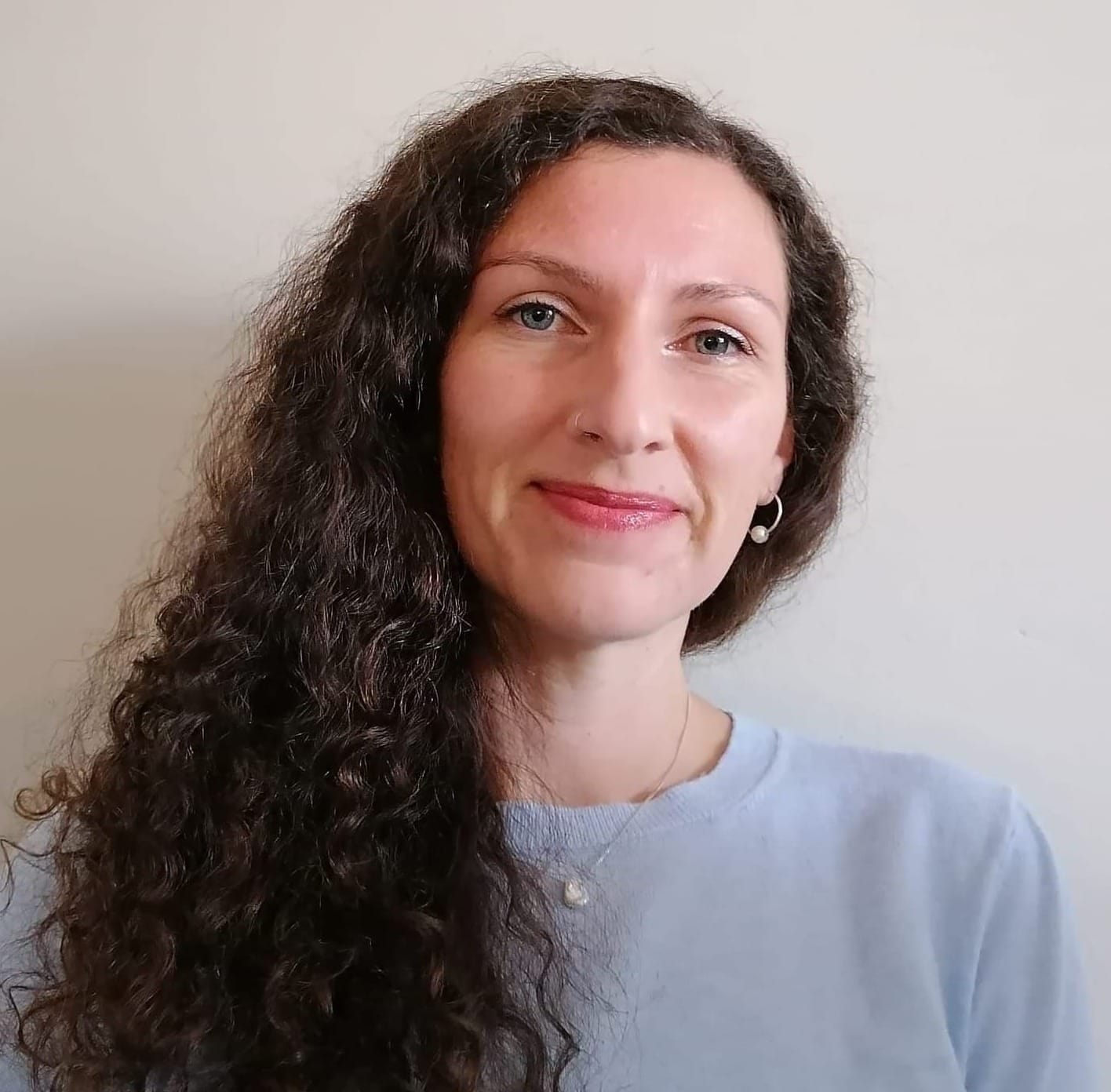




:quality(75))
